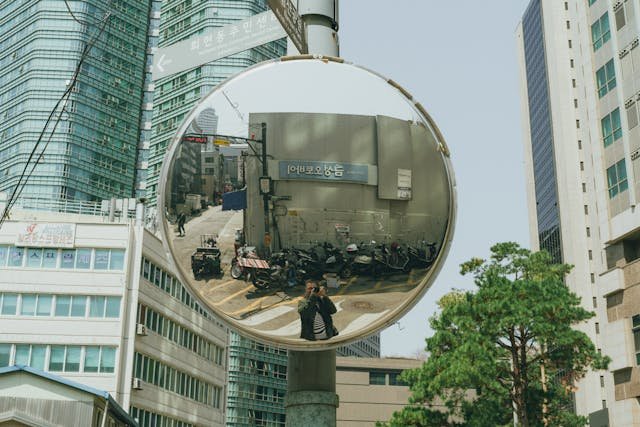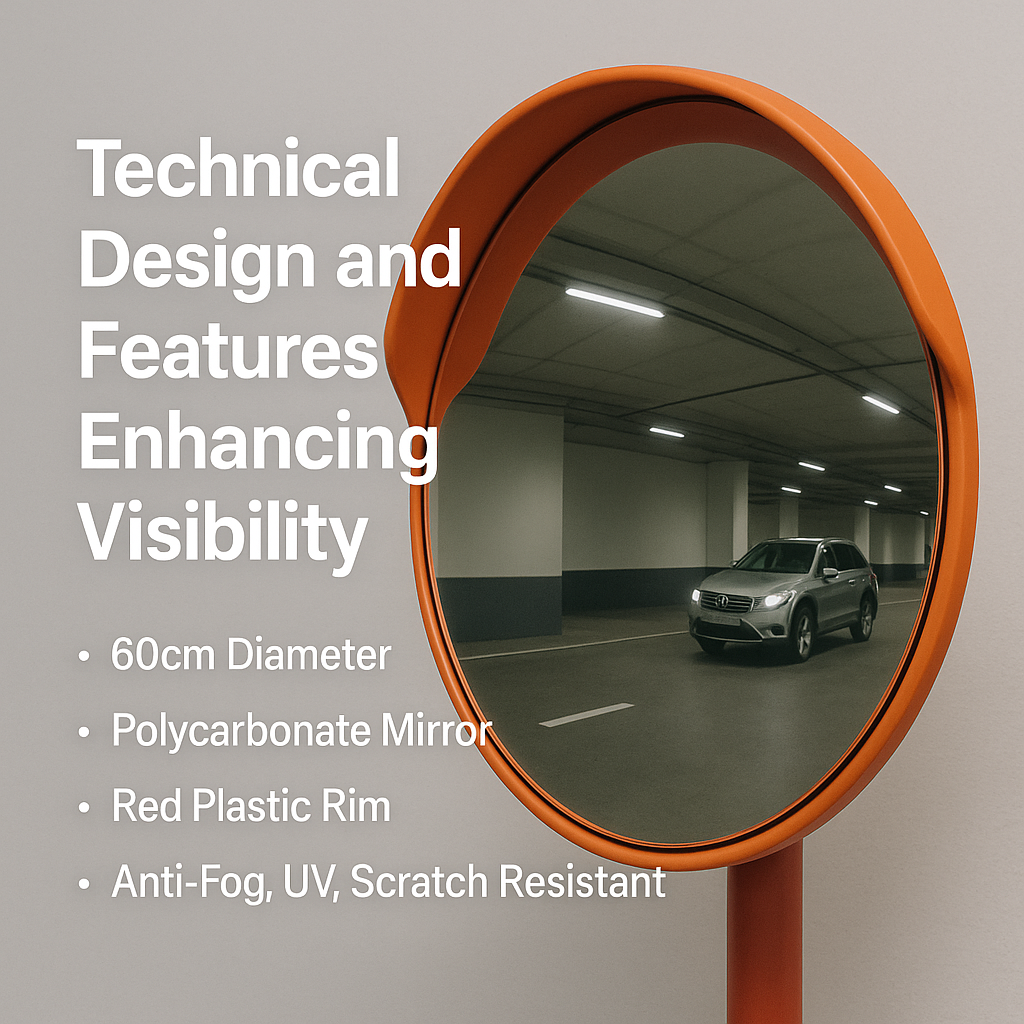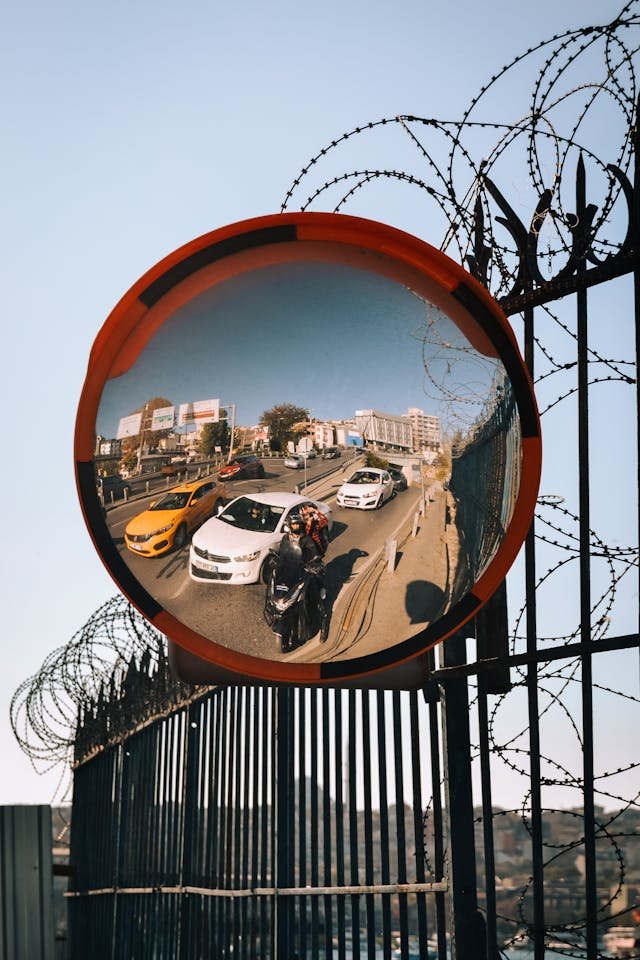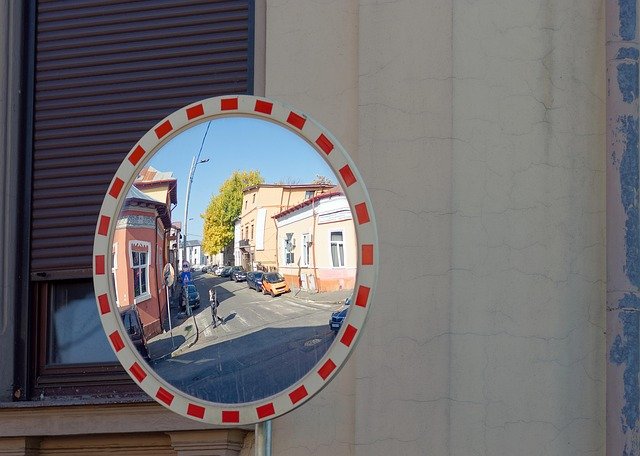Blind spots are one of the most dangerous and overlooked hazards in modern traffic environments. Whether it’s a delivery van reversing in a warehouse, a vehicle exiting a tight parking ramp, or a pedestrian crossing a blind corner, the lack of visibility can result in serious accidents. Convex traffic mirrors, often installed in parking areas, intersections, loading docks, and building exits, offer an inexpensive yet highly effective solution to mitigate these risks. Their unique curved surface provides an extended field of vision, allowing drivers and pedestrians to anticipate movement from hidden directions. This article explores how convex traffic mirrors directly address blind spot issues in commercial, industrial, and public areas.
Understanding the Role of Convex Mirrors
a. What Makes a Mirror “Convex”?
A convex mirror is a reflective surface that curves outward, creating a wide-angle view. Unlike flat mirrors, convex mirrors bend light rays in such a way that they provide a panoramic view of the environment. This curvature allows a user to see around corners or obstacles that would otherwise block their vision.
b. Visual Range and Angle Expansion
One of the biggest benefits of convex mirrors is their ability to expand the visible field. A well-positioned 60cm convex mirror can cover a 130° to 160° viewing angle, enabling users to see vehicles or pedestrians approaching from multiple directions. This is particularly important at multi-lane junctions or complex building exits where drivers must react quickly.
c. Cost-Effective Safety Upgrade
Unlike surveillance cameras that require maintenance, electricity, and monitoring, convex mirrors are passive, weather-resistant devices that require almost no ongoing expense. They serve as a real-time visual aid and are especially useful where installing advanced systems is cost-prohibitive.
Common Blind Spot Scenarios Addressed by Convex Mirrors
a. Parking Garage Intersections
Multi-level parking garages often have concrete columns and tight turns that obstruct views. A convex mirror mounted at a 90° turn provides drivers with clear visual information about incoming traffic, preventing head-on collisions.
b. Building Exit Points
In commercial buildings and factories, drivers exiting a loading bay or underground garage often have limited visibility of pedestrian walkways or cross-traffic. Convex mirrors installed at the building’s edge help reduce guesswork, giving drivers a wider and earlier field of view.
c. Tight Urban Corners
In congested cities, convex traffic mirrors are commonly found on narrow roads, especially near residential gates, alleyways, and security checkpoints. These mirrors help prevent minor collisions, which can cause significant traffic delays or disputes.
d. Driveway-to-Street Mergers
At properties with hedges, walls, or fences near driveways, drivers frequently lack visibility when entering the main road. Installing a convex mirror on the opposite side of the road lets the driver see oncoming traffic without having to creep forward dangerously.

Technical Design and Features Enhancing Visibility
a. Mirror Diameter and Field of Vision
The most commonly used convex mirror sizes for blind spot reduction are 45cm, 60cm, 80cm, and 100cm. For standard parking and building entry/exit applications, the 60cm and 80cm sizes strike a balance between compactness and wide-angle coverage.
b. Material Composition
- Polycarbonate: Highly durable, lightweight, and shatterproof, ideal for high-traffic zones.
- Acrylic: Offers good image clarity and is cost-effective, though it’s more prone to scratches.
- Stainless Steel: Used in heavy-duty or industrial applications for high durability and weather resistance.
c. Mounting Hardware and Flexibility
Convex mirrors are usually mounted on poles or walls using adjustable brackets. These brackets allow fine-tuning the mirror angle to maximize its effectiveness based on the site geometry.
d. Anti-Fog, UV, and Scratch Resistance
To function reliably in all seasons, modern convex mirrors are coated with anti-fog treatments and UV protection. This ensures that even under extreme sunlight or foggy weather, the mirror maintains clarity.

Real-World Applications in the B2B Landscape
a. Commercial Parking Facilities
Shopping malls, corporate office parks, and airports benefit from convex mirrors that help control pedestrian and vehicle interactions. These mirrors are typically placed near ramps, ticketing booths, and pedestrian crosswalks inside parking lots.
b. Industrial and Logistic Hubs
Large warehouses and logistic centers use convex mirrors at internal crossroads where forklifts and trucks often operate. These mirrors drastically reduce vehicle-to-vehicle or vehicle-to-pedestrian collisions in such environments.
c. School and Hospital Zones
Institutions that cater to large volumes of people daily use convex mirrors to ensure that students, patients, and visitors can safely navigate shared spaces, especially in areas where vehicles also pass through.
d. Transport Terminals and Docks
At bus terminals, railway stations, and sea docks, blind spots are frequent due to the presence of large stationary vehicles. Convex mirrors help operators, security personnel, and drivers maintain safe distances and anticipate movement from obstructed zones.

Strategic Considerations for Optimal Deployment
a. Choosing the Right Mirror Size
The size of the mirror should match the specific area it is meant to monitor. For example, a 45cm mirror might suffice for an indoor corridor, while an 80cm or 100cm mirror may be necessary at an open intersection in a parking facility.
b. Mounting Height and Angle
Correct installation height (typically between 2m to 2.5m) is essential for maximizing the field of view. Installers must ensure the mirror angle aligns with the driver’s or pedestrian’s eye level to avoid distortion.
c. Weather and Vandal Resistance
For outdoor applications, using mirrors with reinforced housings and weatherproof materials ensures long-term usability. For high-risk areas, anti-vandal options with reinforced mounts are recommended.

Maintenance and Lifecycle
a. Regular Inspection and Cleaning
While convex mirrors require minimal upkeep, regular cleaning is necessary to remove dust, debris, or weather residue that may obscure visibility. A monthly inspection schedule ensures that no cracks or misalignment go unnoticed.
b. Replacement Cycle
Depending on the material and environmental exposure, most convex mirrors have a lifespan of 3 to 5 years. Suppliers that offer after-sales support and warranty help facility managers maintain long-term safety compliance.
Conclusion
Convex traffic mirrors have proven to be an essential tool in improving blind spot visibility in a wide range of commercial, industrial, and public spaces. By offering an extended field of view, minimal maintenance, and instant visibility of hidden zones, they significantly reduce the risk of accidents caused by obstructed sightlines. Whether it’s a small office parking lot or a large distribution center, properly deployed convex mirrors provide an affordable and effective safety solution. For manufacturers and B2B distributors, offering customizable options and technical guidance for installation adds further value to clients seeking to enhance site safety.
Looking for a custom convex mirror manufacturer or supplier? Struggling to find the right factory to bring your vision to life? We’ve got you covered! At our place, we craft top-quality convex mirrors with precision and care. Big or small, your needs are our mission. Let’s launch your mirror project and take your product line to the next level! Click here to contact
